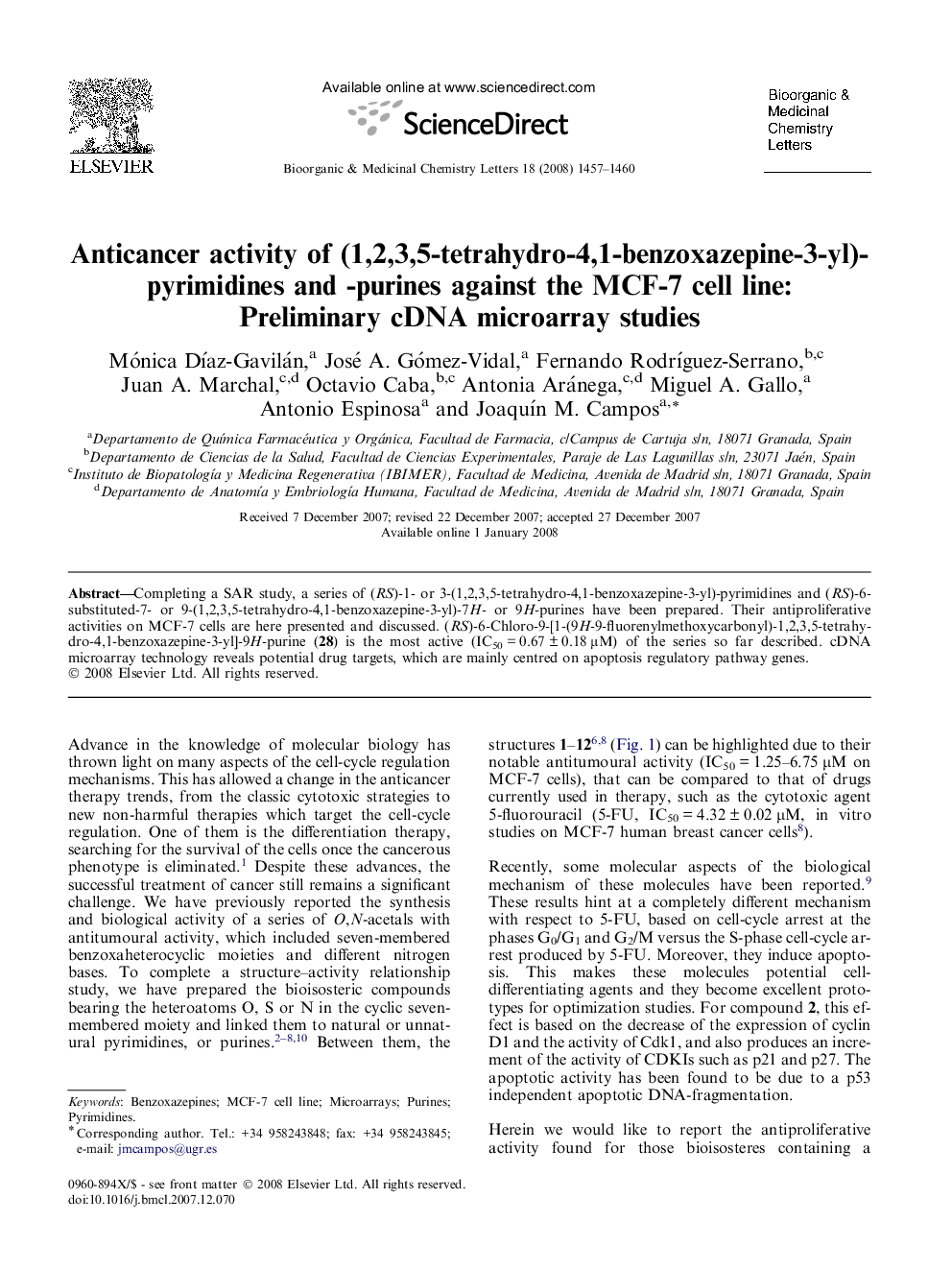| Article ID | Journal | Published Year | Pages | File Type |
|---|---|---|---|---|
| 1373062 | Bioorganic & Medicinal Chemistry Letters | 2008 | 4 Pages |
Completing a SAR study, a series of (RS)-1- or 3-(1,2,3,5-tetrahydro-4,1-benzoxazepine-3-yl)-pyrimidines and (RS)-6-substituted-7- or 9-(1,2,3,5-tetrahydro-4,1-benzoxazepine-3-yl)-7H- or 9H-purines have been prepared. Their antiproliferative activities on MCF-7 cells are here presented and discussed. (RS)-6-Chloro-9-[1-(9H-9-fluorenylmethoxycarbonyl)-1,2,3,5-tetrahydro-4,1-benzoxazepine-3-yl]-9H-purine (28) is the most active (IC50 = 0.67 ± 0.18 μM) of the series so far described. cDNA microarray technology reveals potential drug targets, which are mainly centred on apoptosis regulatory pathway genes.
Graphical abstractTo the best of our knowledge, the O,N-acetal 28 represents a new kind of compound with a novel structure and a significant activity against the MCF-7 cell line.Figure optionsDownload full-size imageDownload as PowerPoint slide
